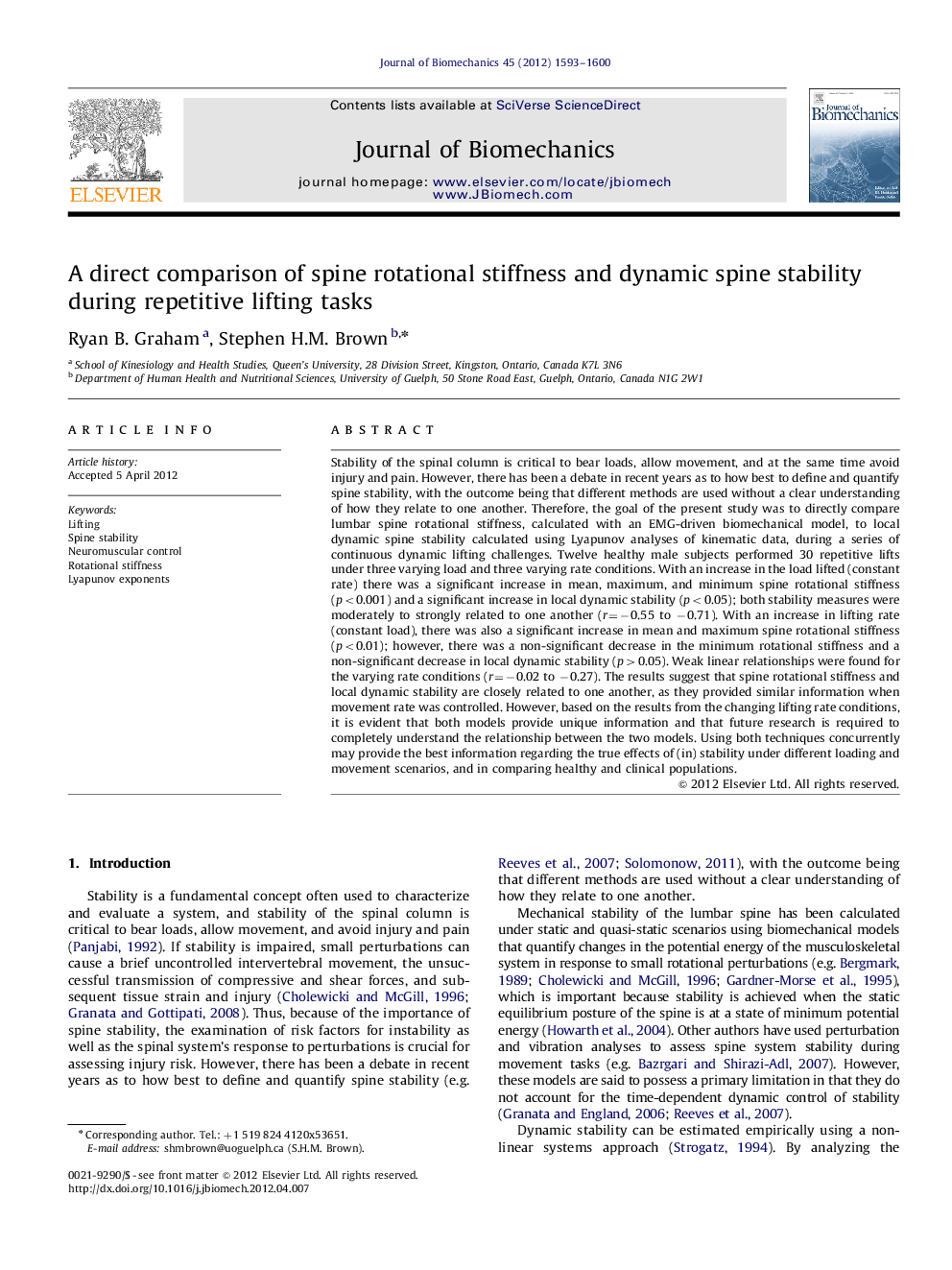| Article ID | Journal | Published Year | Pages | File Type |
|---|---|---|---|---|
| 10432286 | Journal of Biomechanics | 2012 | 8 Pages |
Abstract
Stability of the spinal column is critical to bear loads, allow movement, and at the same time avoid injury and pain. However, there has been a debate in recent years as to how best to define and quantify spine stability, with the outcome being that different methods are used without a clear understanding of how they relate to one another. Therefore, the goal of the present study was to directly compare lumbar spine rotational stiffness, calculated with an EMG-driven biomechanical model, to local dynamic spine stability calculated using Lyapunov analyses of kinematic data, during a series of continuous dynamic lifting challenges. Twelve healthy male subjects performed 30 repetitive lifts under three varying load and three varying rate conditions. With an increase in the load lifted (constant rate) there was a significant increase in mean, maximum, and minimum spine rotational stiffness (p<0.001) and a significant increase in local dynamic stability (p<0.05); both stability measures were moderately to strongly related to one another (r=â0.55 to â0.71). With an increase in lifting rate (constant load), there was also a significant increase in mean and maximum spine rotational stiffness (p<0.01); however, there was a non-significant decrease in the minimum rotational stiffness and a non-significant decrease in local dynamic stability (p>0.05). Weak linear relationships were found for the varying rate conditions (r=â0.02 to â0.27). The results suggest that spine rotational stiffness and local dynamic stability are closely related to one another, as they provided similar information when movement rate was controlled. However, based on the results from the changing lifting rate conditions, it is evident that both models provide unique information and that future research is required to completely understand the relationship between the two models. Using both techniques concurrently may provide the best information regarding the true effects of (in) stability under different loading and movement scenarios, and in comparing healthy and clinical populations.
Related Topics
Physical Sciences and Engineering
Engineering
Biomedical Engineering
Authors
Ryan B. Graham, Stephen H.M. Brown,
